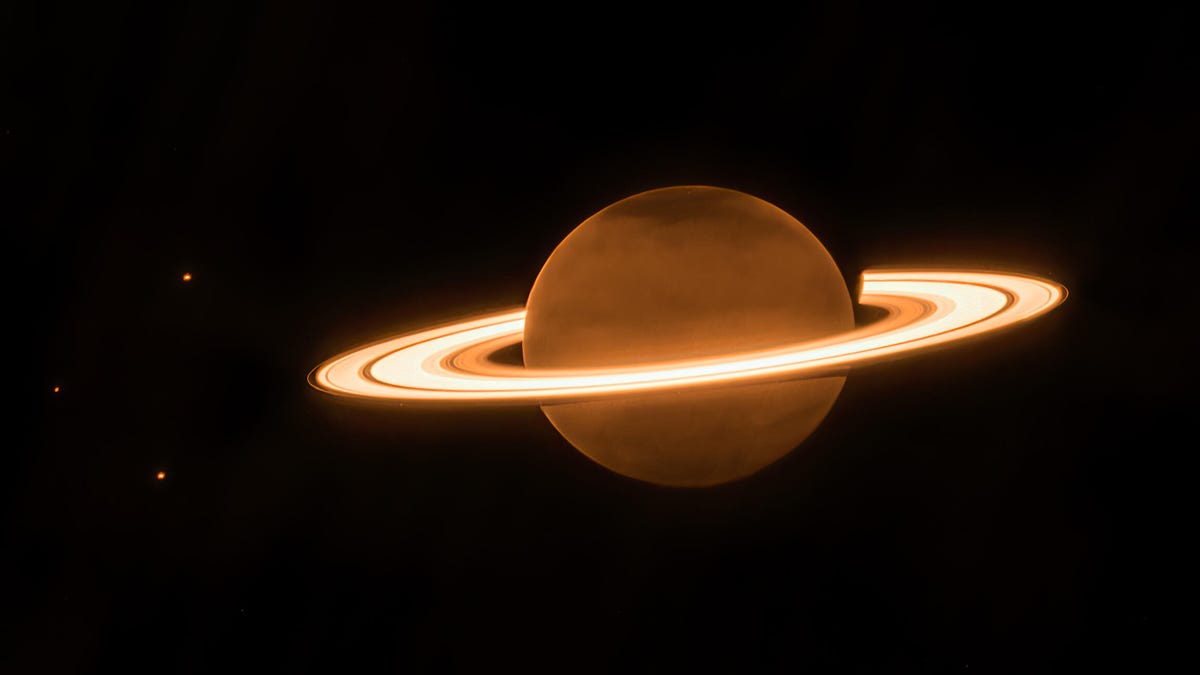Earth may once have had a ring similar to Saturn’s, new research suggests

Saturn sports some of the coolest bling of any planet in our solar system. Its nine rings, composed primarily of dust, rock, and ice, have been the subject of scientific study for years. While Saturn’s rings are the best known, Jupiter, Uranus, and Neptune also have rings. And now, a new study published in the scientific journal Earth and Planetary Science Letters seems to show that the Earth itself once had a similar ring.
The new study claims that Earth’s ring formed about 466 million years ago and stuck around for about 40 million years before disappearing. Researchers say the existence of such a ring would help solve several puzzles of Earth’s past and that much of the data collected supports its existence.
The study begins with a period in history that was quite tumultuous. About 466 million years ago, scientists have found evidence that the Earth experienced a meteor shower, and the meteorite impacts during that period created tsunamis, craters and other chaos. In particular, 21 meteorite craters with a large impact were found during that time.
Read more: It’s not too late to see a meteor shower: here’s what’s left in 2024
Scientists used models of how the Earth’s tectonic plates were moving at the time to determine where the impacts originally occurred and found that all 21 impacts occurred close to the equator. This is odd, since meteorites can strike anywhere on the Earth’s surface and it would be an extraordinary coincidence to see them all occur around the same latitude on Earth with impacts around the same time period.
This led the researchers to propose that Earth once had its own ring and that this ring deposited debris onto the Earth’s surface, which would explain the patterns.
Earth may have destroyed and eaten an asteroid
The researchers believe that Earth’s possible ring was generated by an asteroid that got a little too close for comfort. When something small like an asteroid gets too close to something larger, like Earth, it gets stretched by gravity and breaks apart. The theory is that an asteroid came within Earth’s Roche limit — the distance at which the asteroid would be torn apart by Earth’s gravity — broke apart, and the remnants formed a ring that gradually descended to Earth over tens of millions of years.
It’s not a far-fetched theory, as asteroids constantly pass close to Earth and some even linger for a while as second moons.
“So if Earth destroyed and captured a passing asteroid about 466 million years ago, that would explain the anomalous locations of the impact craters, the meteorite debris in sedimentary rocks, craters and tsunamis, and the relatively brief exposure of the meteorites to space radiation,” said Andrew Tomkinsthe principal investigator of the study.
Tomkins and fellow researchers Erin Martin and Peter Cawood hypothesize that a ring of debris around Earth could solve some mysteries about Earth’s past, including the aforementioned meteorite craters and tsunamis. The team is also exploring the idea that the ring shielded Earth from the sun, contributing to the intense amount of global cooling that caused the Hirnantian glaciation, one of the coldest periods in Earth’s history.




